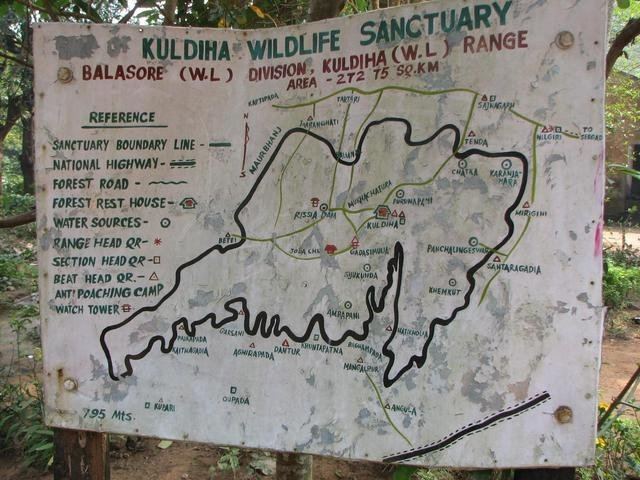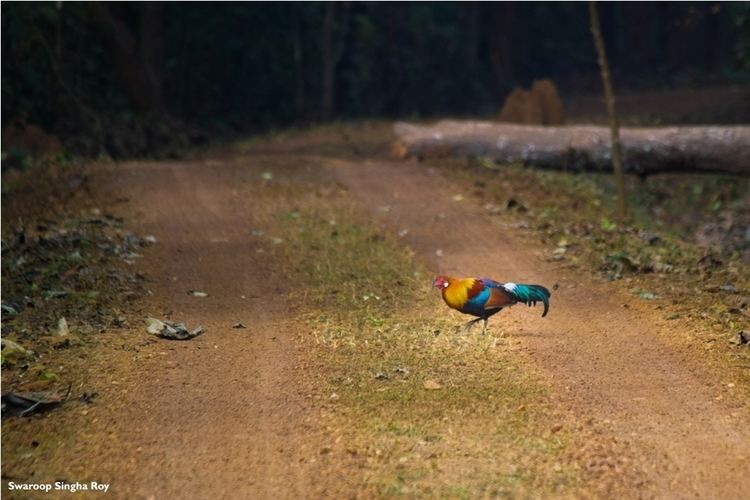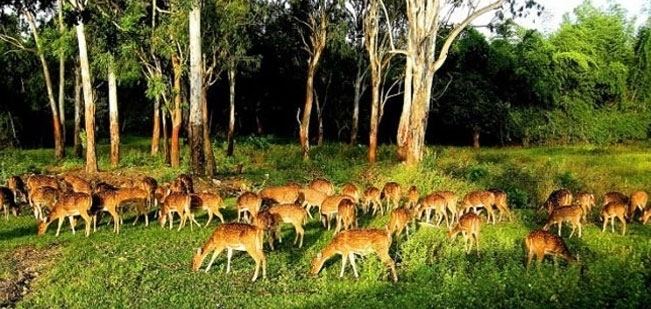Visitors 6340 (in 2015) | ||
 | ||
Area 272.75 kilometres (169.48 mi) Designated January 4, 1984 (1984-01-04) Website | ||
Chandipur beach kuldiha wildlife sanctuary panchalingeswar 12
Kuldiha Wildlife Sanctuary /.kʊldiːəhɑː/ (Odia: କୁଲଡିହା ବନ୍ୟଜନ୍ତୁ ସଂରକ୍ଷଣାଳୟ) is situated in Balasore district of Odisha, India. The sanctuary is spread across 272.75 km2 (105 sq mi) in the Chota Nagpur Plateau region. It is linked with Simlipal National Park via Sukhupada and Nato hill ranges. It is classified as an Eastern Highlands moist deciduous forests ecoregion.
Contents
- Chandipur beach kuldiha wildlife sanctuary panchalingeswar 12
- Chandipur beach kuldiha wildlife sanctuary panchalingeswar 25
- About
- Tourism
- Ecotourism
- How to reach
- Flora and fauna
- References

Chandipur beach kuldiha wildlife sanctuary panchalingeswar 25
About

It was declared a sanctuary on 4 January 1984. It is famous for the Mayurbhanj Elephant Reserve that spreads across Simlipal, Kuldiha and Hadgarh wildlife reserves. Locally in Kuldiha, the elephant reserve is known as Tenda Elephant Reserve. There is a watch tower strategically created at Garsimulia for animal lovers to have a look at elephants taking bath or drinking water from a small stream that runs right through the reserve. The sanctuary offers night stay accommodation at Kuldiha entrance, Jadachua and Rishia in form of huts, tents and few concrete houses. Prior reservation is required for night stay. It is usually closed during peak monsoon season which typically falls between July and September months. Major fire was reported in 2012 that engulfed both Simlipal and Kuldiha forests causing significant damage to flora and fauna. The sanctuary has been declared an ecological sensitive zone as of August 2, 2013 (2013-08-02) by the government.
Tourism
Kuldiha is an integral part of northern Odisha tourism. It attracts tourists and scholars alike.
Ecotourism
Odisha government took recognition of the environmental damage being done by private operators to many parks, sanctuaries and reserves resulting in a sustainable threat to biodiversity . It came up with an ecotourism focus to conserve the pristine state of nature while making it economically viable with a PPP model. Kuldiha sanctuary is operated in a community based ecotourism model that benefits locals/tribesmen inhabiting the core area of sanctuary.
How to reach
The sanctuary is almost equidistant from Bhubaneswar and Kolkata cities. It is easier to reach the place from Bhubaneswar, being the capital city of Odisha state. The nearest airport is Biju Patnaik International Airport. The nearest railway station is Balasore railway station. One can take NH16 (earlier designated NH5) and reach Nilagiri via State Highway 19. Thereafter scenic narrow road leads to the sanctuary entrance.
Flora and fauna
It is a mixed deciduous forest dominated by the Sal tree. Various animals inhabit the forest, including Tiger, Leopard, Elephant, Gaur, Sambar, Giant Squirrel, Hill Myna, Peafowl, Hornbills, other migratory birds and reptiles . A comprehensive scientific report on the animal species present in the park is available in this survey:ISSN 2449-8866. The sanctuary is a haven for environmental and animal research. There are numerous scientific surveys and reports available that focus on the study of flora and fauna of the sanctuary.
